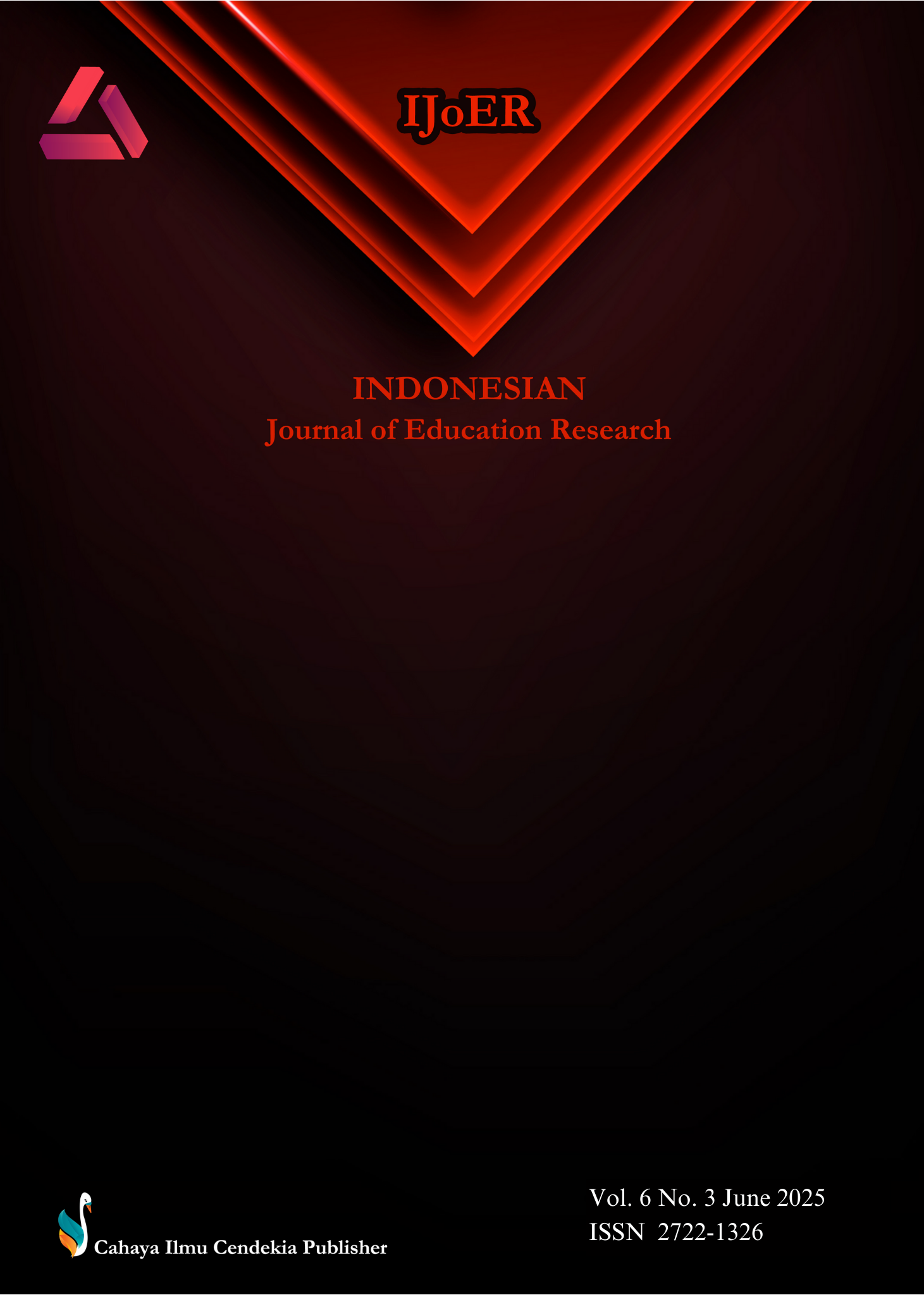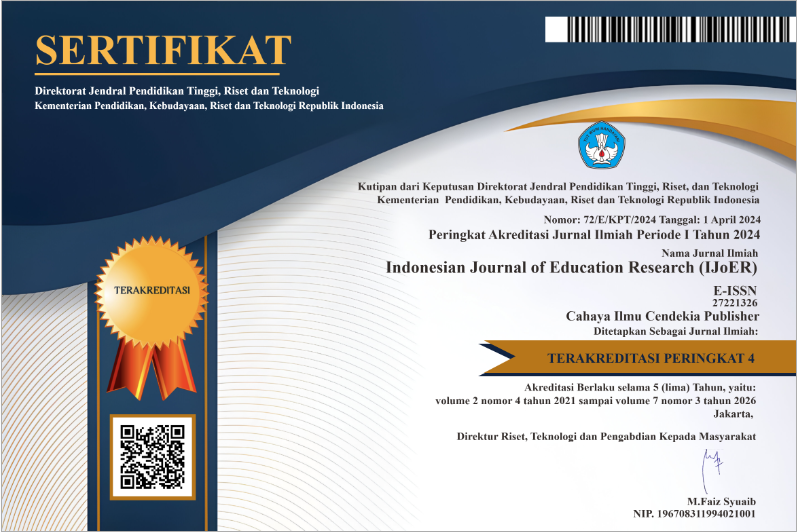Comparing Titration Practices in Educational Institutions with Varied Accreditation Levels
Abstract
Purpose of the study: The study aims to compare the titration practices and the student-to-burette ratio among institutions with varied accreditation levels in Albay, Philippines.
Methodology: The descriptive survey compared titration practices and student-to-burette ratio across educational institutions stratified with varied accreditation levels. The population was Chemistry Instructors and Laboratory Custodians from 15 institutions, totalling 30 respondents, with a sample size of 24 respondents. Data was collected using Survey Instruments for Chemistry Instructors and Laboratory Custodians. Statistical analysis included descriptive and inferential statistical analysis with a chi-square test of association and Cramer’s V effect size (α = 0.05).
Main Findings: Associations between accreditation level, conduct, and availability of reagents for neutralization and complexometric titrations, chi-square test of association, and Cramer’s V effect size (α 0.05) were found. The student-to-burette ratio ranged from 1 to 4 students (Level IV and III) and 40+ students (II and I) per acid and base burettes to no burettes in Level I institutions. The reasons for the non-performance of the titration activities were: lack of materials, training, and experience, assistance in the laboratory, and class size.
Novelty/Originality of this study: This study examines how accreditation levels and titration resources are associated with titration education. The challenges and strengths of titration education in Albay, Philippines, might not be captured in national and international studies. The holistic approach of evaluating titration practices, resource availability, and student-to-burette ratio provides a comprehensive picture of titration education in the province.
References
S. L. Bretz, “Evidence for the importance of laboratory courses,” J. Chem. Educ., vol. 96, no. 2, pp. 193–195, 2019, doi: 10.1021/acs.jchemed.8b00874.
D. Harvey, "Titration Techniques," in Modern Analytical Chemistry, McGraw-Hill Higher Education, pp. 274–365, 2000.
D. A. Skoog, F. J. Holler, and S. R. Crouch, Fundamentals of Analytical Chemistry, 8th ed., Thomson Learning Asia, Singapore, p. 369, 2004.
P. M. Shiundu, Chemistry 3, Volumetric Chemical Analysis, African Virtual University, 2002.
R. Sucgang, “8 Out Of 10 Vinegar Brands Synthetic, ‘Fake’, Isotope Studies Show,” Philippine Nuclear Research Institute, 2019.
A. A. Callano, “Rancidity of Used Cooking Oil and Heavy Metal Analyses on Selected Street-Vended Foods,” UIC Research Journal, vol. 18, no. 1, pp. 77–86, 2012.
C. Baclig, “World Food Day 2022: Rising costs keep millions in PH away from healthy diets,” Philippine Daily Inquirer, 2022.
L. Ison, “Poor Oxygen Levels caused fish Kills: BFAR,” Philippine News Agency, 2019.
E. Seung, A. Choi, and B. Pestel, “University Students’ Understanding of Chemistry Processes and the Quality of Evidence in their Written Arguments,” Eurasia Journal of Mathematics Science Technology Education, vol. 12, no. 4, pp. 991–1008, 2016.
K. T. Kotsis, “The Significance of Experiments in Inquiry-based Science Teaching,” European Journal of Education and Pedagogy, vol. 5, no. 2, Apr. 2024.
G. Reynders, E. Suh, R. S. Cole, and R. L. Sansom, “Developing Student Process Skills in a General Chemistry Laboratory,” Journal of Chemical Education, vol. 96, no. 10, pp. 2109–2119, Aug. 2019.
J. D. San Gabriel and A. S. Manalastas, “Experimental Skills of Senior High School Students on Academic Performance in Chemistry,” International Journal of Research Publications and Reviews, vol. 6, no. 1, pp. 2390–2406, Jan. 2025.
A. S. Al Tobi and S. Duque, “Quality Assurance in Higher Education,” Perspectives of Innovations, Economics and Business, vol. 15, no. 1, pp. 41–48, 2015, doi: 10.15208/pieb.2015.03.
A. L. Reyes, “Medical School Accreditation in the Philippines: Making a Difference,” in 2014 Association for Medical Education in the Western Pacific Region Annual Meeting, Taipei, Taiwan, R.O.C., 2014.
M. L. McHugh, "The Chi-square test of independence," Biochemica Medica, vol. 23, no. 2, pp. 143-149, 2013, doi: 10.11613/BM.2013.018.
J. E. Bartlett, II, J. W. Kotrlik, and C. C. Higgins, “Organizational Research: Determining Appropriate Sample Size in Survey Research,”. Information Technology, Learning, and Performance Journal, vol. 19, no. 1, pp. 43–50, Spring 2001.
J. Ponto, "Understanding and Evaluating Survey Research," J. Adv. Pract. Oncol., vol. 6, no. 2, pp. 168–171, Mar. 2015.
T. Marchant-Shapiro, “The Political Use of Numbers: Lies and Statistics,” in The Political Use of Numbers: Lies and Statistics, Thousand Oaks, CA: SAGE Publications, Inc., 2015, pp. 1–16, doi: 10.4135/978148339514.
K. A. Mat Daud, N. Z. Khidzir, A. R. Ismail, and F. A. Abdullah, “Validity and Reliability of Instrument to Measure Social Media Skills Among Small and Medium Entrepreneurs at Pengkalan Datu River,” International Journal of Developmental Sustainability, vol. 7, no. 3, pp. 1026–1037, 2018.
J. Love, D. Dropmann, and R. Selker, “jamovi (Version 2.4.11),” [Software], 2023.
E. Wenger, Communities of Practice: Learning, Meaning, and Identity. Cambridge University Press, Cambridge, U.K., 1998.
H. A. Hanafi, A. Marasigan, "Readiness of Science Laboratory Facilities of the Public Junior High School in Lanao del Sur, Philippines," IOER Int. Multidiscip. Res. J., no. 2, 2020.
P. Kumar, B. Shukla, and D. Passey, “Impact of Accreditation on Quality and Excellence of Higher Education Institutions,” Revista Investigación Operacional, vol. 41, no. 2, pp. 151–167, 2020.
H. Adiyaman and Z. Keser Özmantar, “Impact of Accreditation on Schools: An Examination in Terms of Open System Elements,” Participatory Educational Research, vol. 10, no. 2, pp. 174–194, Mar. 2023, doi: 10.17275/per.23.35.10.2.
B. L. Johnson Jr., "Resource Dependence Theory: A Political Economy Model of Organizations," ERIC, Rep. ED387871, Sep. 1995.
S. Mishra, Quality Assurance in Higher Education: An Introduction. National Printing Press, Bangalore, India, Jun. 2006.
S. Shahqad, R. Ali, Hukamdad, S. R. Ghazi, and U. S. Gilami, "Access and Equity in Basic Education," Asian Soc. Sci., vol. 6, no. 8, pp. 138–144, Aug. 2010. doi: 10.5539/ass.v6n8p138.
M. Naeem, W. Ozuem, K. Howell, and S. Ranfagni, "A Step-by-Step Process of Thematic Analysis to Develop a Conceptual Model in Qualitative Research," Int. J. Qual. Methods, vol. 22, 1 2023, Art. no. 16094069231205789. doi: 10.1177/16094069231205789.
J. M. De Borja and A. Marasigan, "Status of Science Laboratory in a Public Junior High School," Int. J. Res. Publ., vol. 46, no. 1, 2020.
G. O. Gunong, Addressing Teacher Professional Development Issues: Supporting Teacher Quality, DepEd.
A. B. I. Bernardo, M. O. Cordel, M. O. Calleja, et al., "Profiling Low-Frequency Science Students in the Philippines Using Machine Learning," Humanit. Soc. Sci. Commun., vol. 10, no. 192, 2023. doi: 10.1057/s41599-023-01705-y.
D. S. Moore, W. I. Notz, and M. A. Fligner, The Basic Practice of Statistics (6th ed.). New York, NY: W. H. Freeman and Company, 2013.
Commission on Higher Education, CHED Memorandum Order No. 048-06 s. 2006: Criteria and Implementing Guidelines for the Identification, Support, and Development of Centers of Excellence and Centers of Development for Criminology Program, Nov. 3, 2006.
J. P. Reyes and A. D. Pateña, "Challenges of BS Medical Laboratory Science Schools in the Philippines in PACUCOA Accreditation," Int. J. Open-Access, Interdiscip. & New Educ. Discoveries ETCOR Educ. Res. Cent. (iJOINED ETCOR), vol. II, no. 3, 2023, pp. 1-10, P-ISSN – 2984-7567; E-ISSN - 2945-3577.
Copyright (c) 2025 Carina B. Orden

This work is licensed under a Creative Commons Attribution 4.0 International License.
Authors who publish with this journal agree to the following terms:
- Authors retain copyright and acknowledge that the Indonesian Journal of Education Research (IJoER) is the first publisher licensed under a Creative Commons Attribution 4.0 International License.
- Authors are able to enter into separate, additional contractual arrangements for the non-exclusive distribution of the journal's published version of the work (e.g., post it to an institutional repository or publish it in a book), with an acknowledgment of its initial publication in this journal.
- Authors are permitted and encouraged to post their work online (e.g., in institutional repositories or on their website) prior to and during the submission process, as it can lead to productive exchanges and earlier and greater citation of published work.







.png)
.png)




















